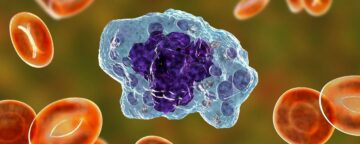Laura Tran in The Scientist:
 Macrophages serve as the Swiss army knives of the innate immune system, switching between phenotypes to perform different functions in response to the surrounding environment. One of their key attributes is their mobility to sites of inflammation, infection, and tumors. This trait garnered the attention of researchers who developed therapies to leverage macrophages’ abilities.1 There are three different macrophage types, naïve (M0), antitumor (M1), and protumor (M2). M1 macrophages accumulate at the tumor and exert antitumor activity. Researchers have attempted to use them in adoptive cell therapies, but these cell therapies are in their early stages with limited clinical success.2 One aspect that may influence treatment efficacy is how the macrophages traffic to the tumor. For now, the dynamics of macrophage movement are poorly understood.
Macrophages serve as the Swiss army knives of the innate immune system, switching between phenotypes to perform different functions in response to the surrounding environment. One of their key attributes is their mobility to sites of inflammation, infection, and tumors. This trait garnered the attention of researchers who developed therapies to leverage macrophages’ abilities.1 There are three different macrophage types, naïve (M0), antitumor (M1), and protumor (M2). M1 macrophages accumulate at the tumor and exert antitumor activity. Researchers have attempted to use them in adoptive cell therapies, but these cell therapies are in their early stages with limited clinical success.2 One aspect that may influence treatment efficacy is how the macrophages traffic to the tumor. For now, the dynamics of macrophage movement are poorly understood.
Samir Mitragotri, a bioengineer at Harvard University, wondered, “If we look at the transport properties of activated M1 macrophages and the naïve M0 macrophages, is there a difference?” Upon investigation, Mitragotri and his team elucidated how macrophage phenotype alters its efficiency in tumor infiltration. Their findings, published in Applied Physics Reviews, offer insights into how macrophage dynamics may influence cell therapy development.3
More here.
